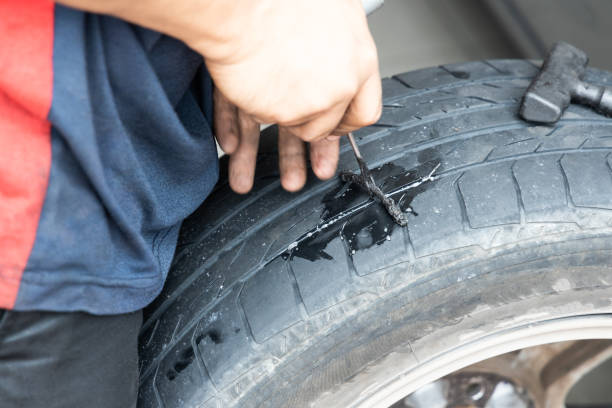Tubeless tires are currently standard on almost all modern vehicles. As the name implies, these tires do not have an inner tube and are installed directly on the car’s rim or alloy wheel. These are equally safe and dependable as tube-type tires but offer a significant benefit in that air does not leak out instantly during a puncture. So what will you do if you get a tubeless tire puncture?
Repairing a tubeless tire is a faster operation that the owner may complete. Do you still not believe us? Then, continue reading to learn how to fix a tubeless tire puncture at home.
How Do You Mend a Tubeless Tire Puncture?
Repairing a tubeless tire puncture is a simple operation that doesn’t require the assistance of a professional. However, before we get into puncture repair, we must understand the distinction between regular and tubeless tires. As the name implies, a tubeless tire lacks an inner tube and fits straight onto the rim or alloy wheel. Because of this, repairing a puncture in a tubeless tire is simple.
1. Purchase a Tubeless Tyre Puncture Repair Kit.
A tubeless tire puncture repair kit is readily accessible at any auto accessories or tire store. You may even purchase one online. Invest in a portal vehicle tire inflator as well. You will also need to buy a pair of pliers from a hardware shop. All of this may be stored in the car’s trunk.
2. Find a Safe Location
If you suffer a flat tire while driving, attempt to find a safe parking place. Check that the location is well-lit and that you are not impeding traffic movement. A front tyre is less complicated to fix than a rear tyre. This is because you don’t need to remove the front wheels; merely identify the nail (or another sharp item) and turn the wheel outside or inside, depending on where the nail is located. You may need to move the automobile slightly to obtain a good view of the nail. To repair a rear puncture, jack up the vehicle and remove the wheel.
3. Make use of the Tubeless Tyre Puncture Repair Kit.
- The kit is used for both front and rear tires. Use the “smoothening tool” and pliers to remove the nail from the tire. Take care to dispose of the pin correctly.
- Then, using the “smoothening tool,” smooth out the little hole left by the nail. You will need to insert and remove the tool several times until the hole is large enough to fit the rubber strip used to plug the gap.
- Prepare to insert the rubber strip once the hole is large enough. Remember to leave the “smoothening tool” halfway in the spot rather than extracting it. Insert a whole strip into the “Strip insertion tool” now. Hold the tire securely between your legs if you have removed it. As you remove the “smoothening tool,” insert the “strip tool” side by side and push it in. Please wait for a second, then totally remove it.
4. The Last Steps
The rubber strip will remain in the hole, plugging it and preventing air leakage. Next, cut the left outstrip projecting from the tire hole with a tiny blade.
Do not use a puncture kit that is more than two years old. In such instances, the rubber hardens, making it nearly impossible to put the rubber strip into the hole.
5. Run-through
Check for air leakage from the plugged hole using water. A portable tire inflates will also help replenish any lost air.
Time required: A front tyre may be readily repaired in about fifteen minutes, including putting up any lost air. Add fifteen minutes to remove and replace the wheel if it’s the rear one. A puncture repair kit, portable tire inflator, and a set of pliers will be at most Rs 1500 – 2000, depending on the model. This is a solid investment that comes in useful on road trips.
However, there are a few things to bear in mind when patching a puncture.
- Only use a puncture kit that is two years old since the rubber strip will become too hard to place inside the hole.
- Another essential issue is that puncture repair kits may only heal minor punctures produced by sharp items. If there is a large cut or the tyre has split apart, the tyre cannot be repaired and must be replaced.
- Finally, fix the puncture only if you are confident using the tools. If not, you should take your automobile to a puncture repair business since you might wind up harming the tire if you do it incorrectly.
Tyre Inspection
Before getting your hands filthy, properly inspect the tire for puncture. Pour water on the tire to identify the source of the air leak because it might be aggravating to discover that there is more than one puncture after you have repaired one.



